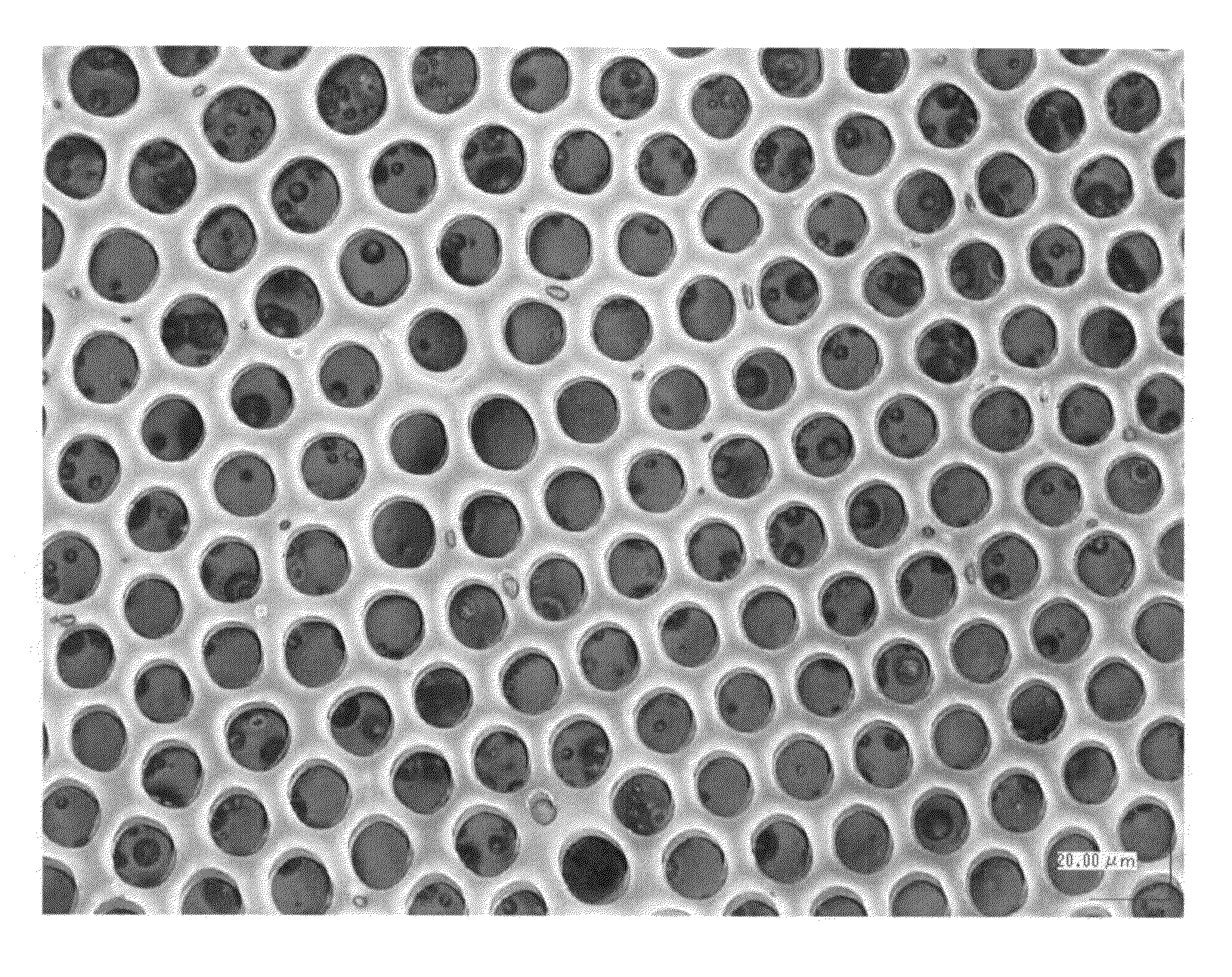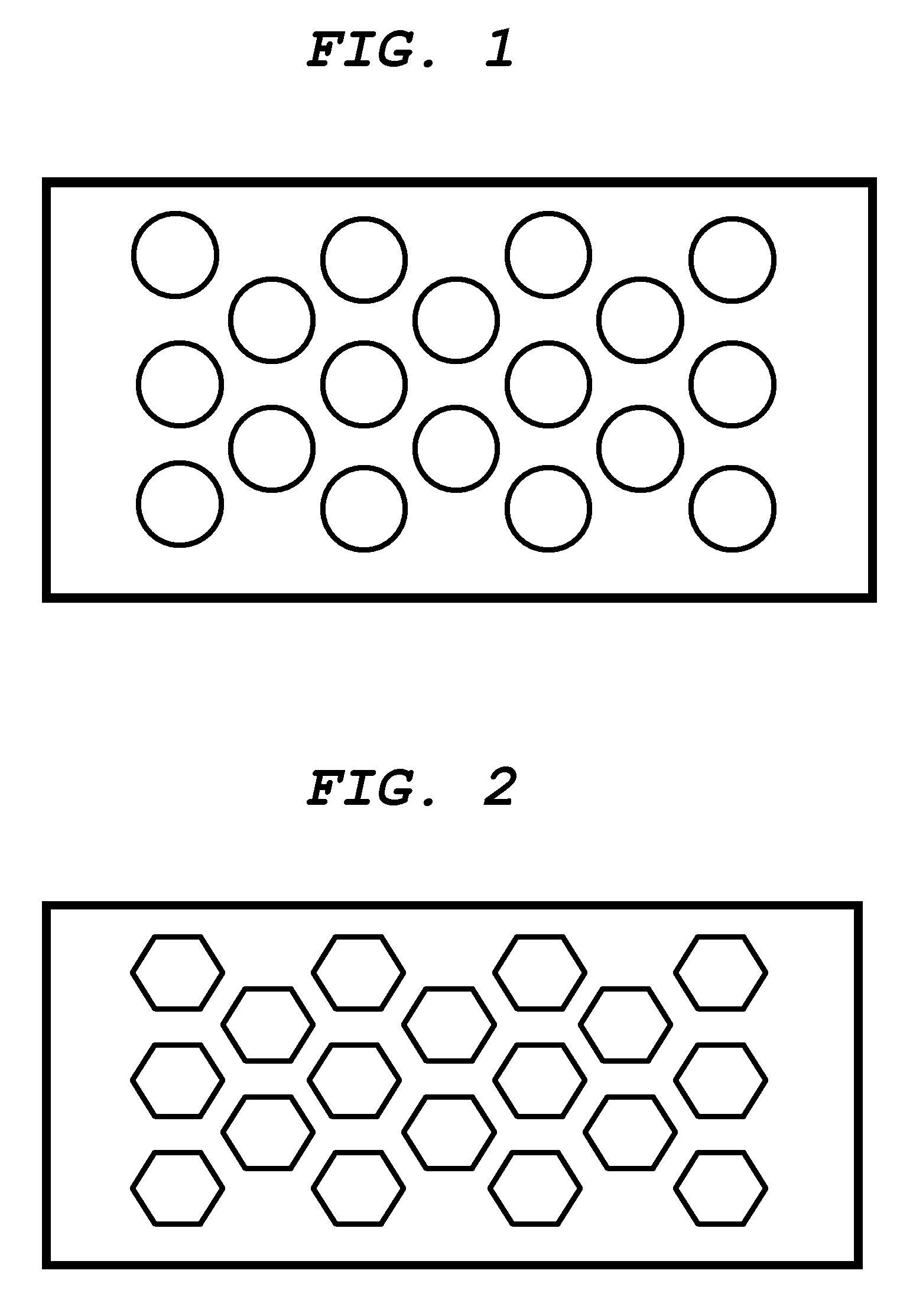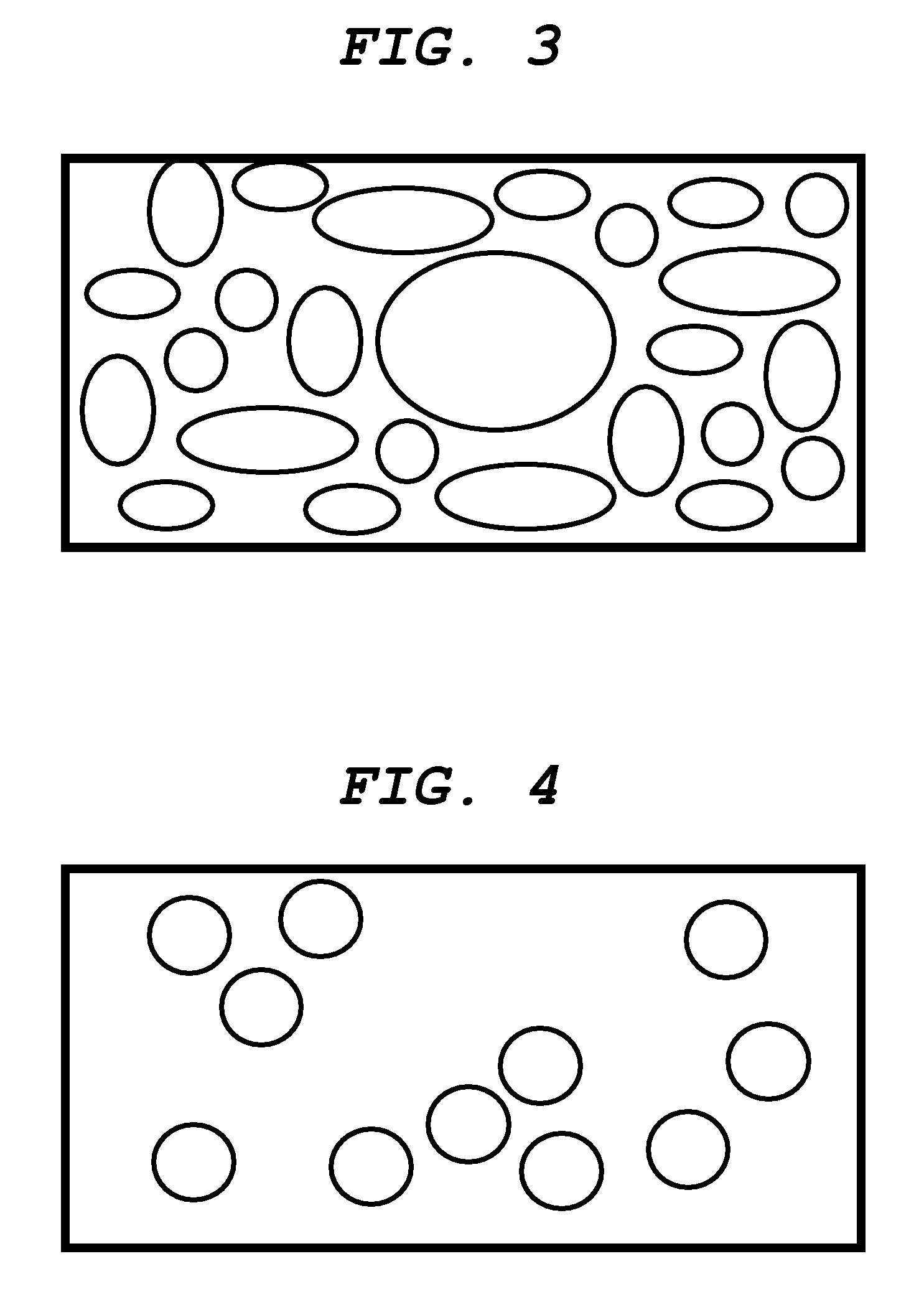Method of producing solid body having depressed portion on surface
a technology of depressed portion and solid body, which is applied in the direction of coatings, polyester coatings, polycarbonate coatings, etc., can solve the problems of increased cost, increased risk of coating defects, and reduced material choice, so as to achieve a stable method and low cost
- Summary
- Abstract
- Description
- Claims
- Application Information
AI Technical Summary
Benefits of technology
Problems solved by technology
Method used
Image
Examples
specific examples
In the above-described experiment, if the solvent is toluene, for example, the volume of the aqueous phase is 50 ml, and thus is classified as hydrophobic. If the solvent is dimethyl sulfoxide (DMSO), a monophase is formed, and thus the volume of the aqueous phase is 0 ml. In this case, the solvent is classified as hydrophilic. Further, if the solvent is 1,1-dimethoxymethane(methylal), the volume of the aqueous phase is 69 ml, and thus the solvent is not classified as either hydrophilic or hydrophobic.
In the present invention, the expression “dipole moment as calculated from geometry optimization based on a semiempirical molecular-orbital calculation”, refers to the value of the dipole moment calculated based on the semiempirical molecular orbital calculation program MOPAC using PM3 parameters. In the molecular-orbital method, a wave function used in the Schroedinger's equation is approximated by the Slater type matricial equation or Gauss type matricial equation consisting of a mol...
example 1
A solution was prepared by mixing together and dissolving 6 parts of dimethyl sulfoxide as solvent A, 54 parts of monochlorobenzene as solvent B and 12 parts of polycarbonate resin (“Iupilon Z200”, manufactured by Mitsubishi Gas Chemical Company, Inc.) as the polymer compound. Next, this solution was coated onto a glass plate under normal temperature and humidity conditions (23° C., 50% RH). Then, while evaporating the solvent by leaving the glass plate for 10 minutes under normal temperature and humidity conditions, a depressed portion was formed on the coated film surface. The glass plate was then dried by heating for 1 hour at 150° C. to form a polycarbonate resin film on the glass plate. Observation of this resin film with a laser microscope (“VK-9500”, manufactured by Keyence Corporation) showed that shapes were formed on the surface which had a plurality of pores regularly formed thereon. The pore diameter was about 14 μm, and the depth was about 10 μm. The observed results of...
example 2
A solution was prepared by mixing together and dissolving 1.8 parts of dimethyl sulfoxide as solvent A, 58.2 parts of monochlorobenzene as solvent B and 12 parts of polycarbonate resin (“Iupilon Z200”, manufactured by Mitsubishi Gas Chemical Company, Inc.) as the polymer compound. In the same manner as in Example 1, the solution was coated onto a glass plate and left to stand, then dried by heating to form a polycarbonate resin film. In the same manner as in Example 1, the surface state was observed, and the contact angle with water and the friction coefficient were measured. The results of the contact angle and friction coefficient measurements are shown in Table 3-1. Further, a plurality of pores were regularly formed on the surface of the resin film. The pore diameter was about 6 μm, and the depth was about 4 μm.
PUM
| Property | Measurement | Unit |
|---|---|---|
| RH | aaaaa | aaaaa |
| temperature | aaaaa | aaaaa |
| volume | aaaaa | aaaaa |
Abstract
Description
Claims
Application Information
 Login to View More
Login to View More - R&D
- Intellectual Property
- Life Sciences
- Materials
- Tech Scout
- Unparalleled Data Quality
- Higher Quality Content
- 60% Fewer Hallucinations
Browse by: Latest US Patents, China's latest patents, Technical Efficacy Thesaurus, Application Domain, Technology Topic, Popular Technical Reports.
© 2025 PatSnap. All rights reserved.Legal|Privacy policy|Modern Slavery Act Transparency Statement|Sitemap|About US| Contact US: help@patsnap.com



